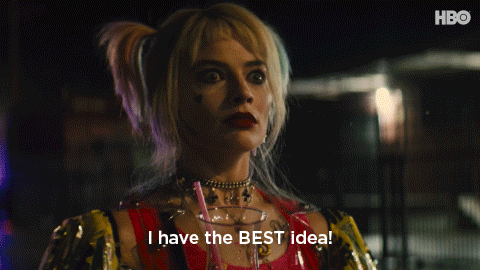Happy Friday and happy Spooktober, all! Mercury is in retrograde, technology is shit, and my brain-to-mouth filter has gone missing. But the good news is, September was one of my most productive months and I’m hoping—fingers crossed—that I’ll be able to keep the writing streak alive in October.
Now, October isn’t only known as Spooktober, but it’s also known as Preptober. For all you non-writers out there, Preptober is the month where many writers prep their WIPs for NaNoWriMo (National Novel Writing Month). NaNoWriMo takes place every November, and the goal is to write 1,667 words per day or 50,000 words in thirty days.
Once again, I’m not partaking in NaNoWriMo this year. I have too many writing projects stacked on my proverbial plate as it is. I don’t need to add another to the chaotic mix. But, since it’s Preptober, I figured it would be a good month to talk about how I plan my stories. Now, just to note that planning and outlining are not synonymous with each other. Outlining can be part of the planning process, but it does not embody it.

Prepping the WIP
Characters. It all starts with characters. I’ve said it once and I’ll say it again, characters are the heart and soul of the story. It’s their journey we’re following, and it’s their journey we’re invested in. Without characters, there is no story.
The planning stage is where I get to know who my characters are. While their personalities evolve on the page and throughout each revision, this is where the foundation is built. I start off with physical descriptions, age, birthdates, occupations, and more. But character development goes beyond physical appearances and zodiac signs. It’s also about their personalities and who they are as people. Remember, characters are people moving on the page with purpose.
So, what is their purpose? What is the reason for their story? What do they want (external goals)? Why do they want it? What do they need (internal goals)? Why do they need it? What is their belief system and why? What drives their actions and behaviors? What motivates them? What are their fears? What are their strengths and weaknesses? What is their personality like? How do they view the world? How do they view others? How do others view them? What is their backstory and how did they get to this point?
I try to answer most of these questions as best as I can prior to writing my first draft, but some answers don’t become clear until the editing and revision process. I don’t set anything in stone during the planning phase. Characters need room to grow and that typically doesn’t happen until after the first draft.
Plot and Story Ideas. Now that I know who my characters are and what their goals are, I have a general sense of what their story is going to be about. I grab a notebook and write down any and every possible idea that comes to mind. Nothing is too farfetched or outrageous at this point in the process.
I tend to figure out the conflict, ending, and major story moments prior to figuring out my beginning. Openers are always a struggle for me, but endings come easy, which is why I write them first. This latest side project was an exception to my norm. I knew my beginning prior to knowing my ending, which was a first. But I’m not complaining.
World Building and Settings. Much like character development, world building can be a complex and lengthy process. The world and settings play an integral part of the story. Setting not only sets the overall atmosphere, but it can also influence character behaviors and actions, aiding in character development and influencing the plot. Settings provide visual context for readers, immersing them into the character’s world and enriching the story overall.
When it comes to world building, the first thing I do is determine where and when the story takes place. What is the world like? What is society like? What is the government like? What are the laws of this world? What is the environment like? What are the climate and weather like? What is the terrain like? Is there a magic system? If so, what are the rules?
Then I move on to the settings and locations. What specific locations do the events take place at? When do they take place? What do the characters see, hear, smell, feel, and taste? What is their perception of the setting? What emotions are they evoking? This helps set the mood for the scene I’m working on. Most of the time, the setting develops organically during the drafting phase. While planning, I just make some light notes to remember any pertinent details for later.
This is such a dense topic that I will be covering it again in more detail in the future as it pertains to my stories and processes.
Research. Research is an important part of my planning process. It can be grueling and time-consuming, but it can also be a lot of fun. I’m the type of person who loves learning and researching new things. For my past and current WIPs, I’ve researched locations, cultures, history, topography, occupations, weapons, herbs, crystals, necromancy, modes of transportation, mythology, lore, and so much more.
Mythology and lore are my favorite research topics, but I also love picking out cars, homes, clothes, hairstyles, and accessories for my fictional people. It’s like I’m shopping, but not buying anything.
Snippets and Scene Sketches. Any scene or snippet of a potential scene, whether it’s dialogue, inner monologue, setting description, etc., gets written down. I might not know where the snippet or scene fits into the story, but that doesn’t matter at this point. This is all part of the brainstorming process. Writing snippets and scene sketches allows me to connect with my characters and their voices in the early stages. If I see it play out in my head, I write it. That’s my rule.
Aesthetic Boards and Playlists. I am a visual person, but I suck at writing descriptions. In fact, most of my rough drafts are severely lacking when it comes to setting details. Aesthetic boards help me visualize the setting and write the details as my characters would see them. I also use aesthetic boards to set the tone for the overall story. You can find some of them on my website and on my social media pages.
Music is a major source of inspiration for my storytelling. It sets the mood, helps me get a sense of the world, the characters, particular scenes, and the story overall. Music coupled with aesthetic boards helps transform my vision into words and brings the story to life.
Remember, this is just how I go about planning my stories. Each writer has a different process when it comes to planning. As a writer, you need to utilize whatever methods work best for you. Sometimes it’s all a matter of trial and error before finding something you’re comfortable with. It took me three years to figure out what worked best for me. For some, it might take more time, for others, it will take less.
Update
The next character blog will be Daniel’s and will be posted on Sunday, October 31st, which is right in time for Halloween. The next writing life blog will be posted on Friday, November 12th.
I have new aesthetic boards and playlists in the works. I’m hoping to get those posted by the end of this month. So, keep your eyes peeled for those. That is all I have for you today. As always, stay safe and stay healthy. Happy Halloween!
Cheers,
Amelia





Leave A Comment